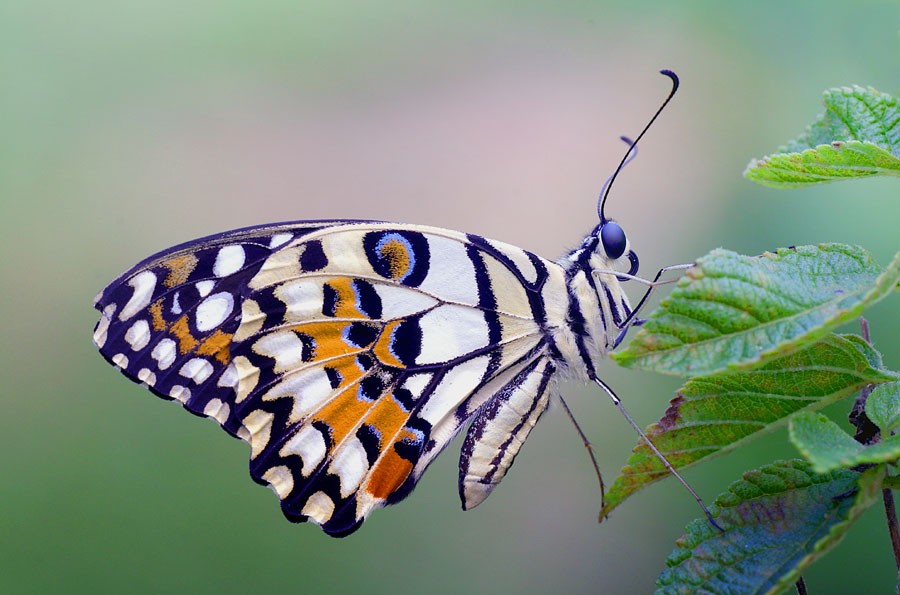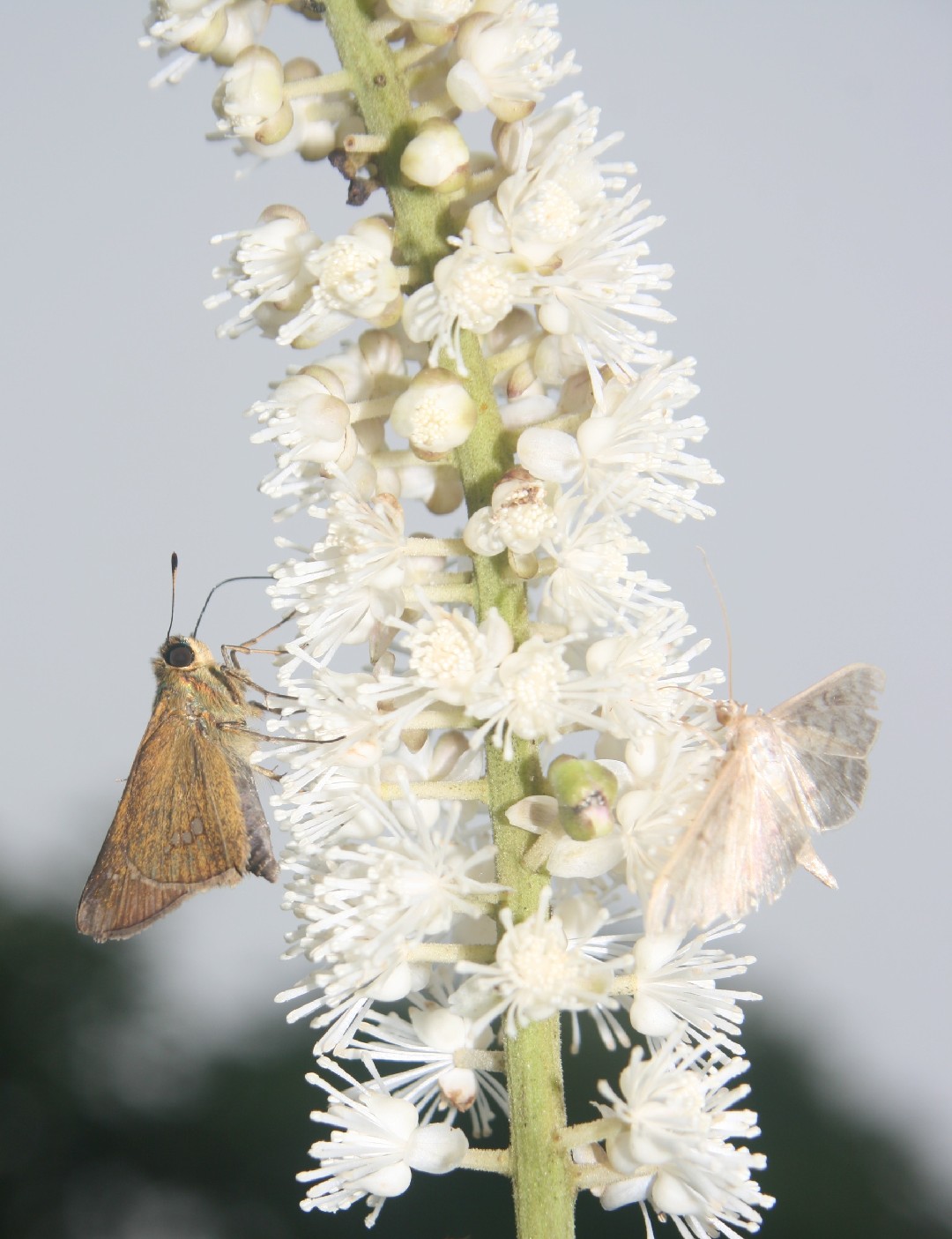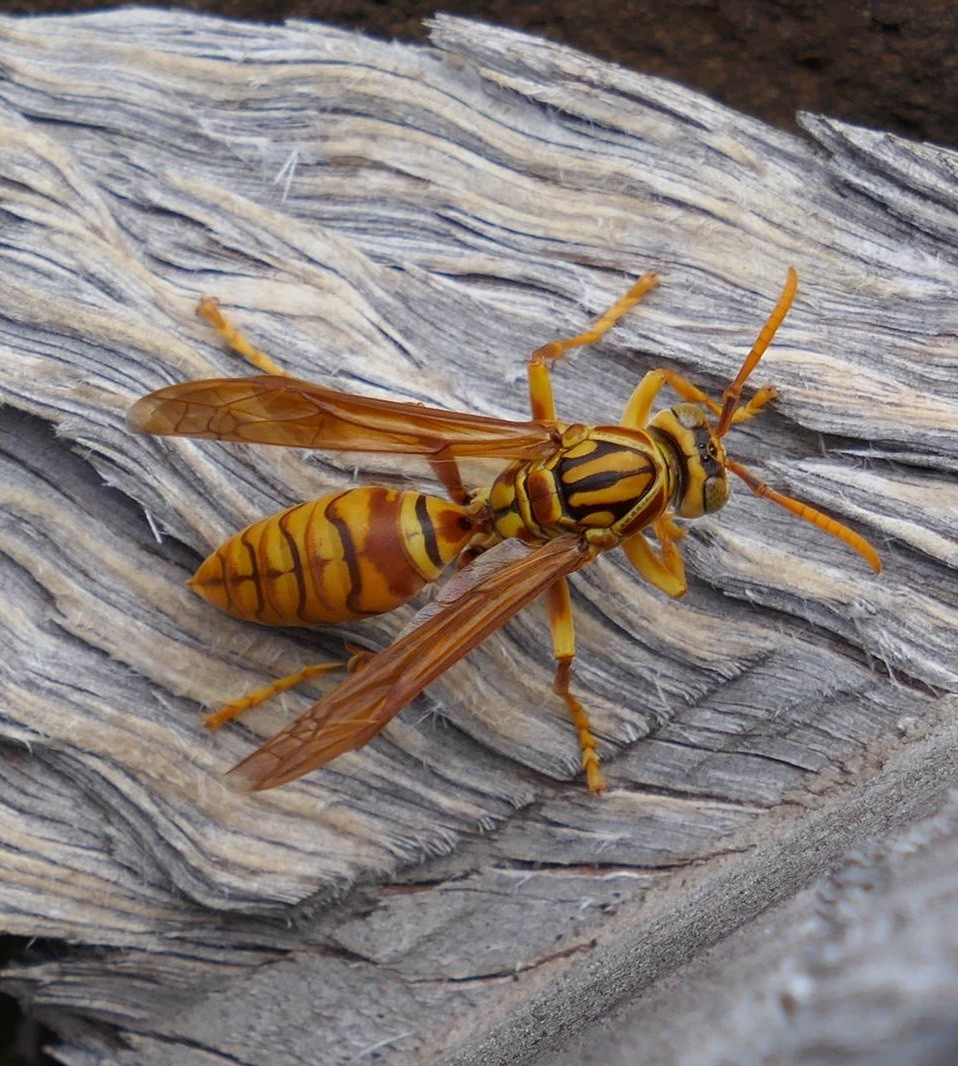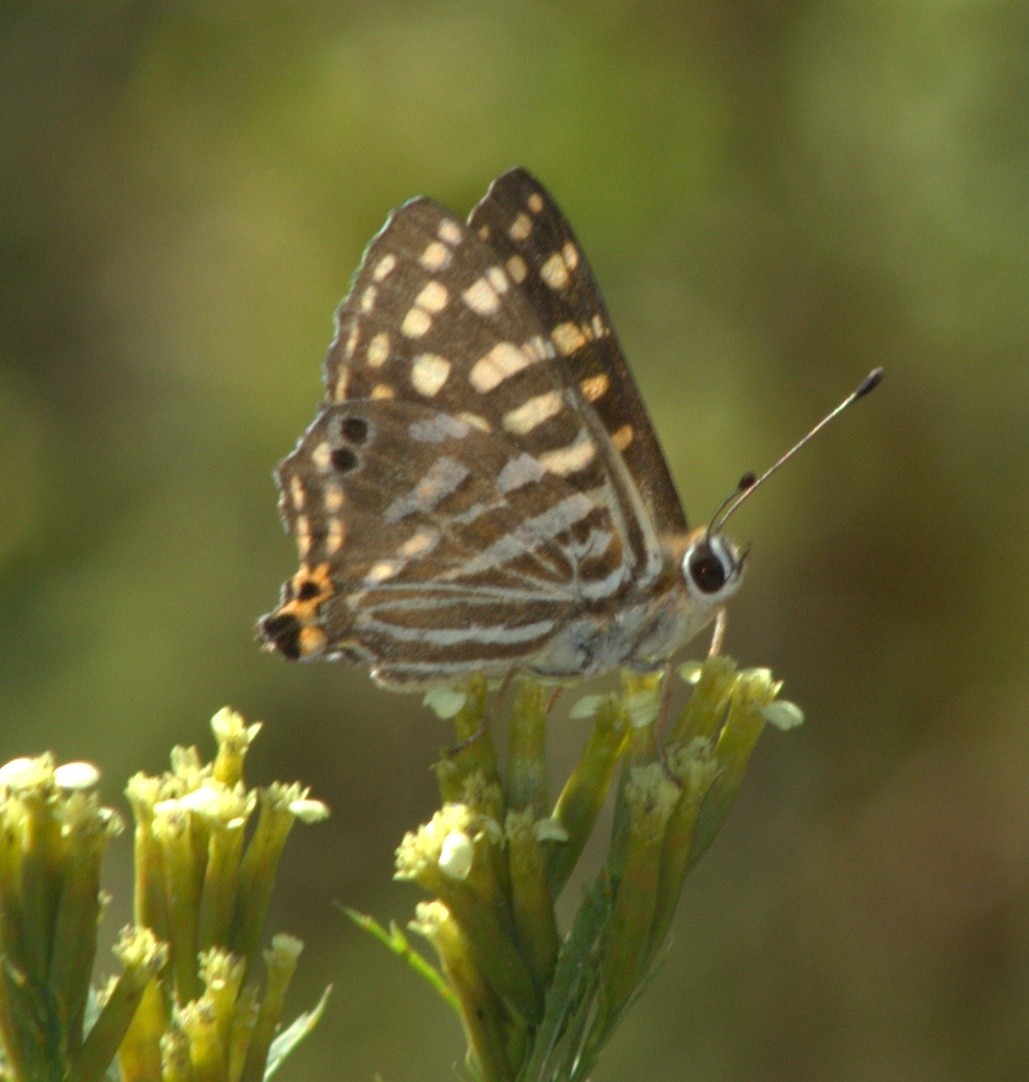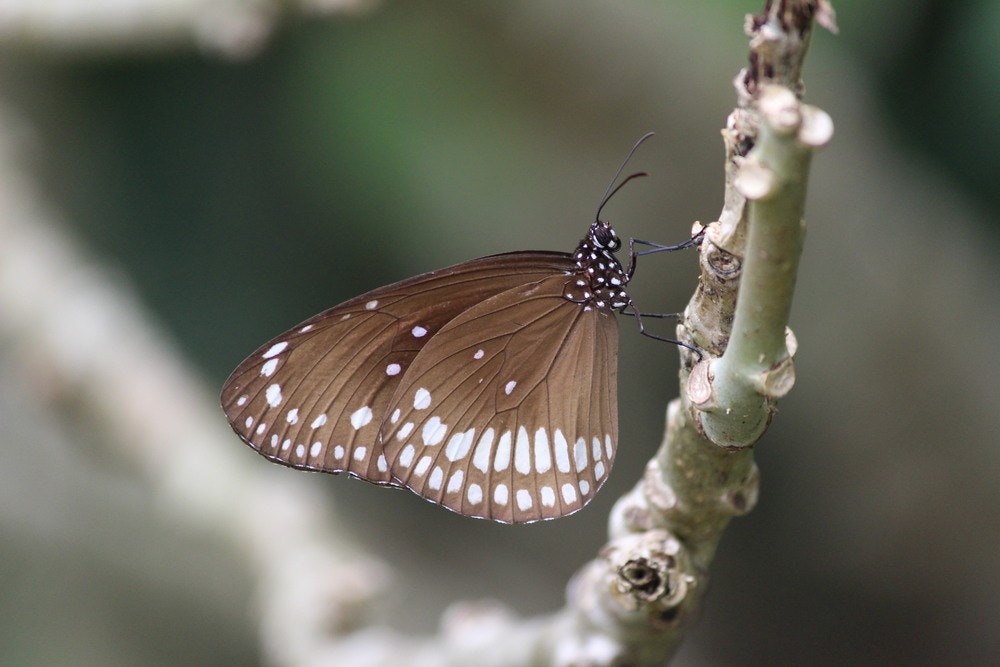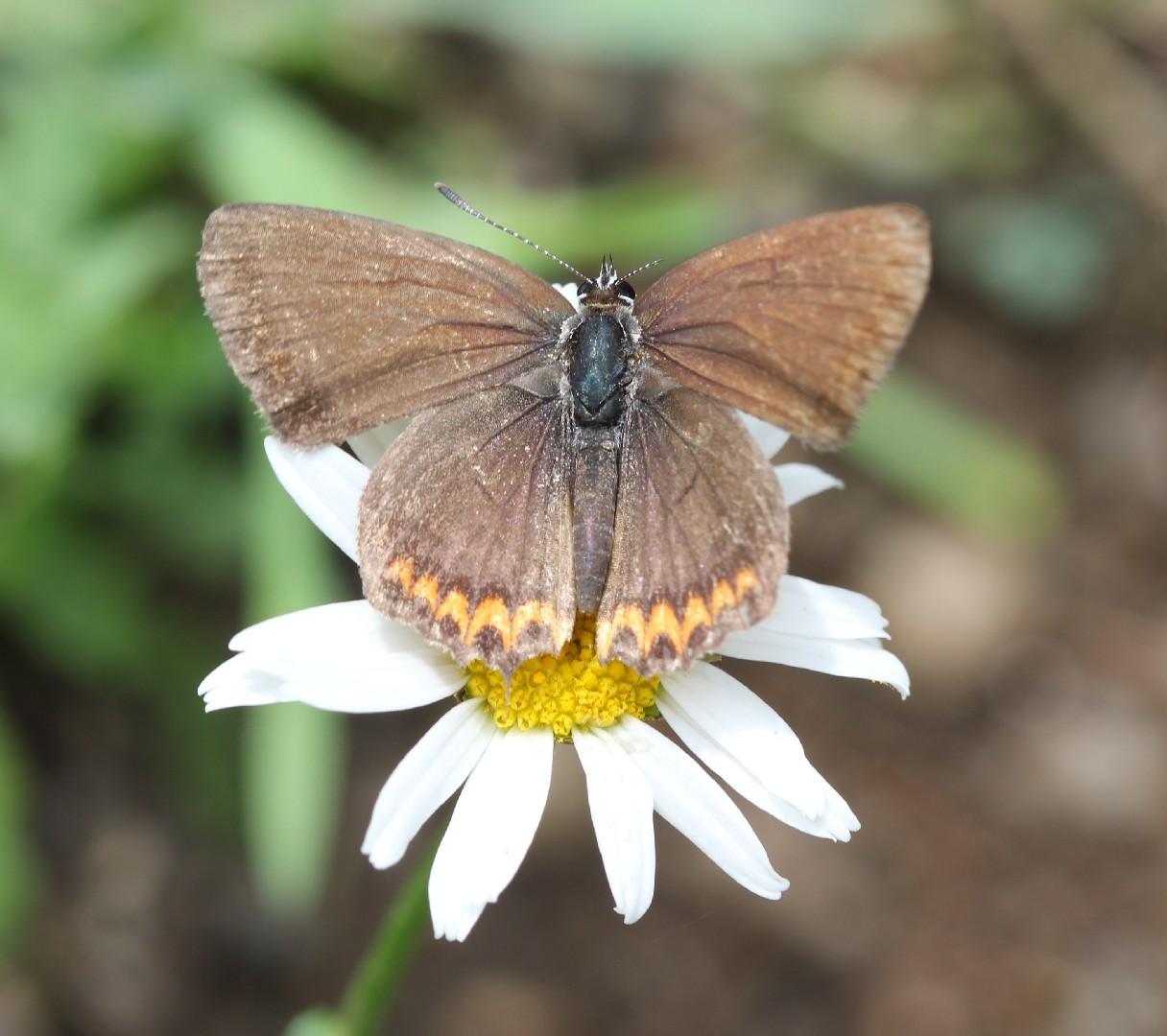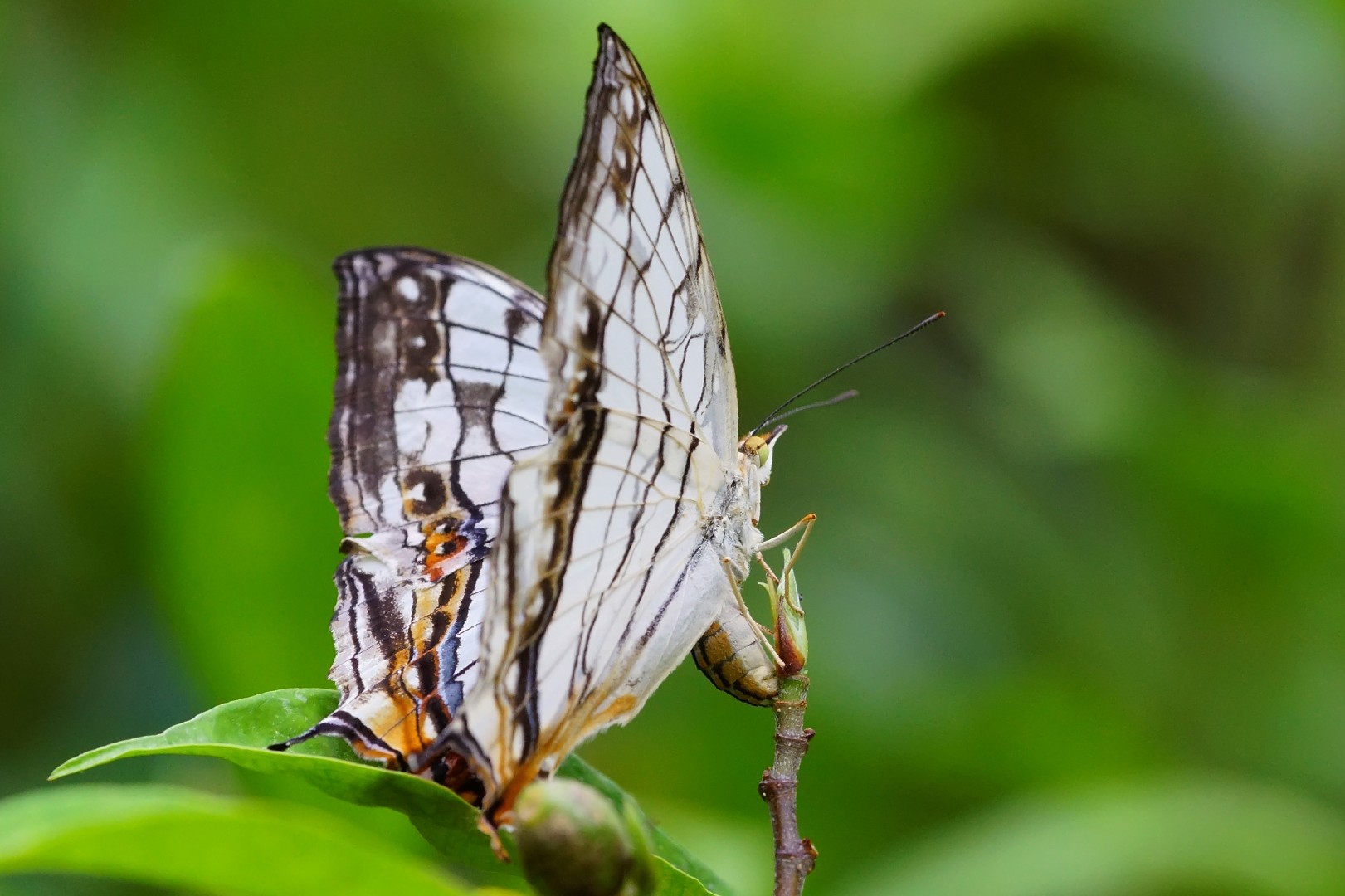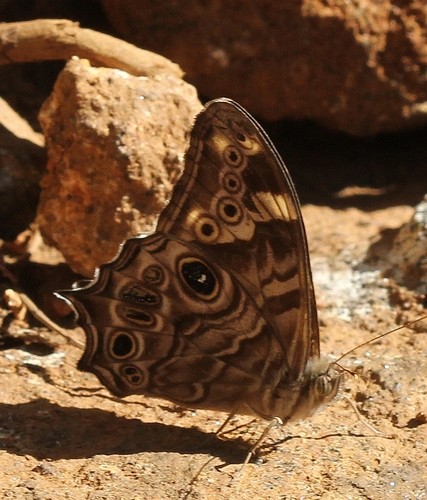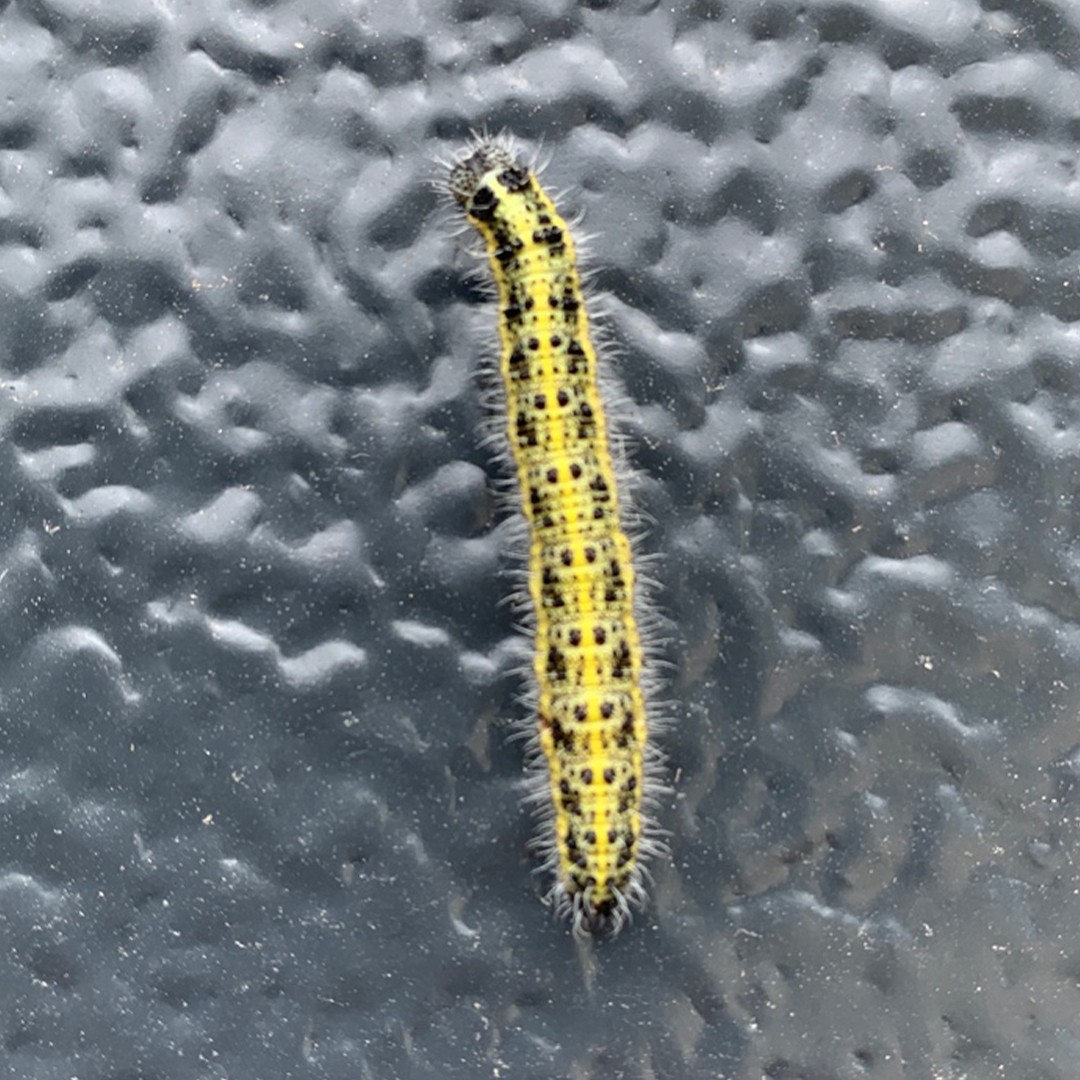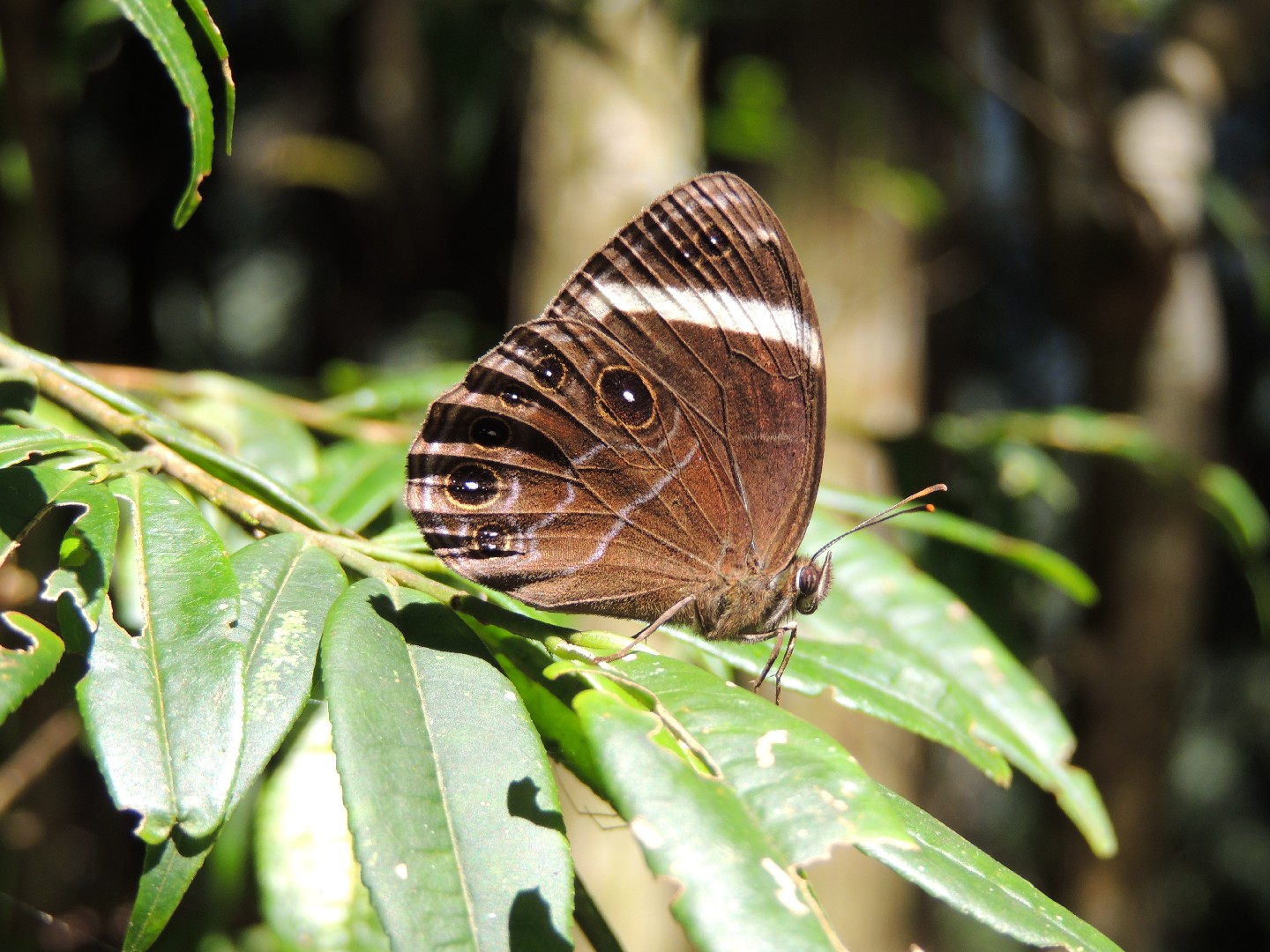Top 20 Most Common Insects in Himachal Pradesh
Insects play a pivotal role in the grand ecological tapestry of Himachal Pradesh, with its diverse climates providing the perfect canvas. Home to an array of insects, spanning both pests and friendlier varieties, their presence significantly impacts Himachal Pradesh's local ecosystems, highlighting the intrinsic connection between a region and its critters. Stay tuned as we explore '20 Most Common Insects in Himachal Pradesh,' providing insights into their fascinating world!
Most Common Insects
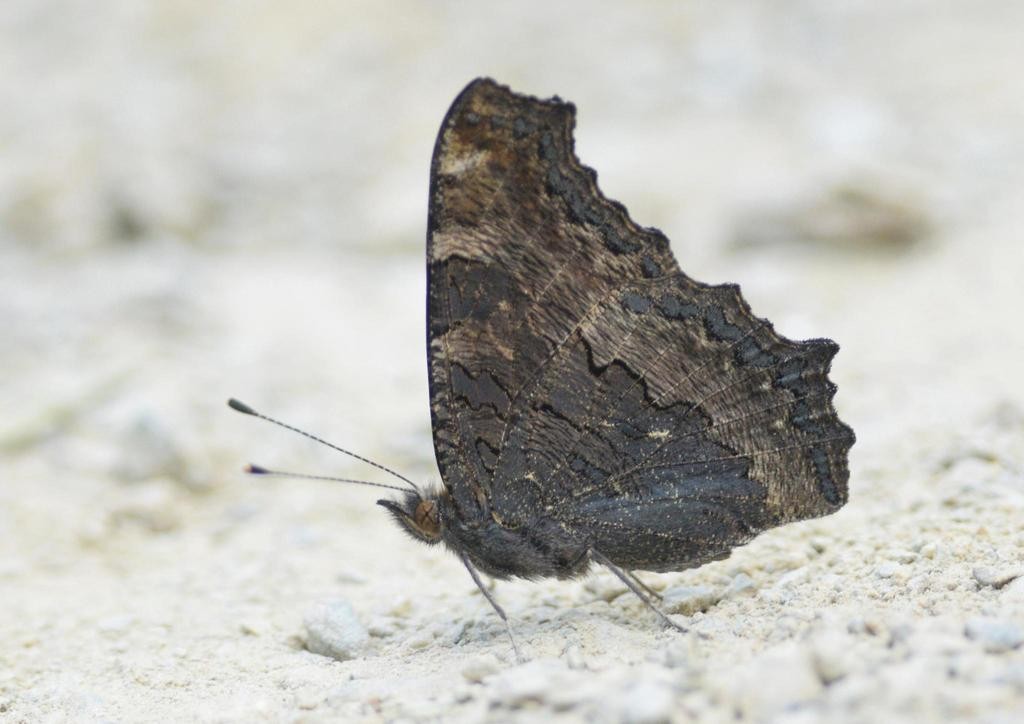
1. Indian Tortoiseshell
Upperside of forewings with the basal half of costa and termen pale brown, the former flecked with pale yellow, the latter bordered inwardly by a narrow darker brown band bearing a series of black lunules; outwardly traversed by sinuous slender subterminal and more slender terminal black lines: base of wing and the greater part of interspace 1a and of 1 posteriorly brown, irrorated with golden scales, the rest of the wing anteriorly yellow, posteriorly and at base of cell red, with the following black markings: a broad band across the cell, another broader short band beyond, touching the discocellulars, not extending below vein 4, and a third not extending below vein 5, with a white patch beyond before apex, all three short bands rounded posteriorly; on the disc there is a large oval black spot, followed by a yellow patch in interspace 1, and above it smaller black spots in interspaces 2 and 3. Hindwing has the basal half dusky brown, covered posteriorly with long brown hairs; anteriorly beyond the bases of veins 5, 6 and 7 black, followed by a broad red band anteriorly turning to yellow; a broad terminal brown band, traversed by a series of black-bordered blue lunules, and beyond them by very slender inner and outer black sinuous lines. Underside brown, with closely set transverse short black striae; basal half of wings clouded with dark purplish brown, the outer margin of the dark portion defined by a highly sinuous jet-black transverse line, most distinct on the hindwing, and also crossed, nearer the base of the wings, by two or three similar, much interrupted lines; terminal half of the wings paler, with two dark irregular patches below costa of forewing; finally a sinuous transverse subterminal narrow dark blue band across both forewings and hindwings, bordered on both sides by slender black lines, widening into spots on the veins of the forewing. This band is more distinct in the female than in the male. Antennae dark brown, minutely ringed with white; head, thorax and abdomen dark brown above and below. Has a wingspan of 52–63 mm. 
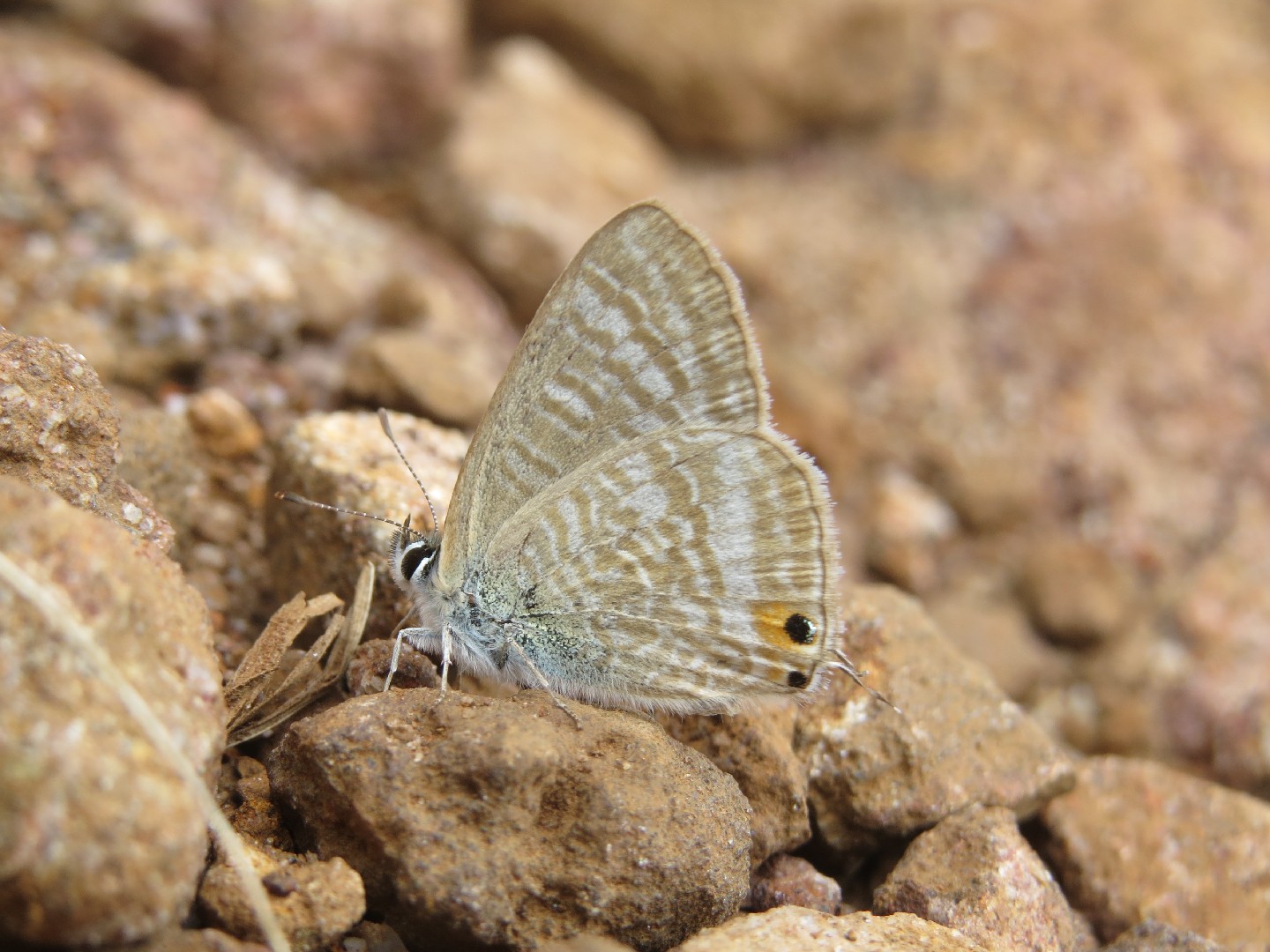
2. Pea blue
The wingspan is 24–32 mm for males and 24–34 mm for females. In these small butterflies the males have a mainly blue violet upper face of the wings with the brown edges, while the females have only a small amount of blue colour in the centre of the wings (sexual dimorphism). Both sexes have a thin, long tail in the hindwings and two black spots in the anal angle. The underface of the wings is ocher and adorned with white markings and with a larger white submarginal streak. The underface of each hindwing shows a pair of small black eye-spots beside each tail, with an orange marginal spots at the anal angle. 
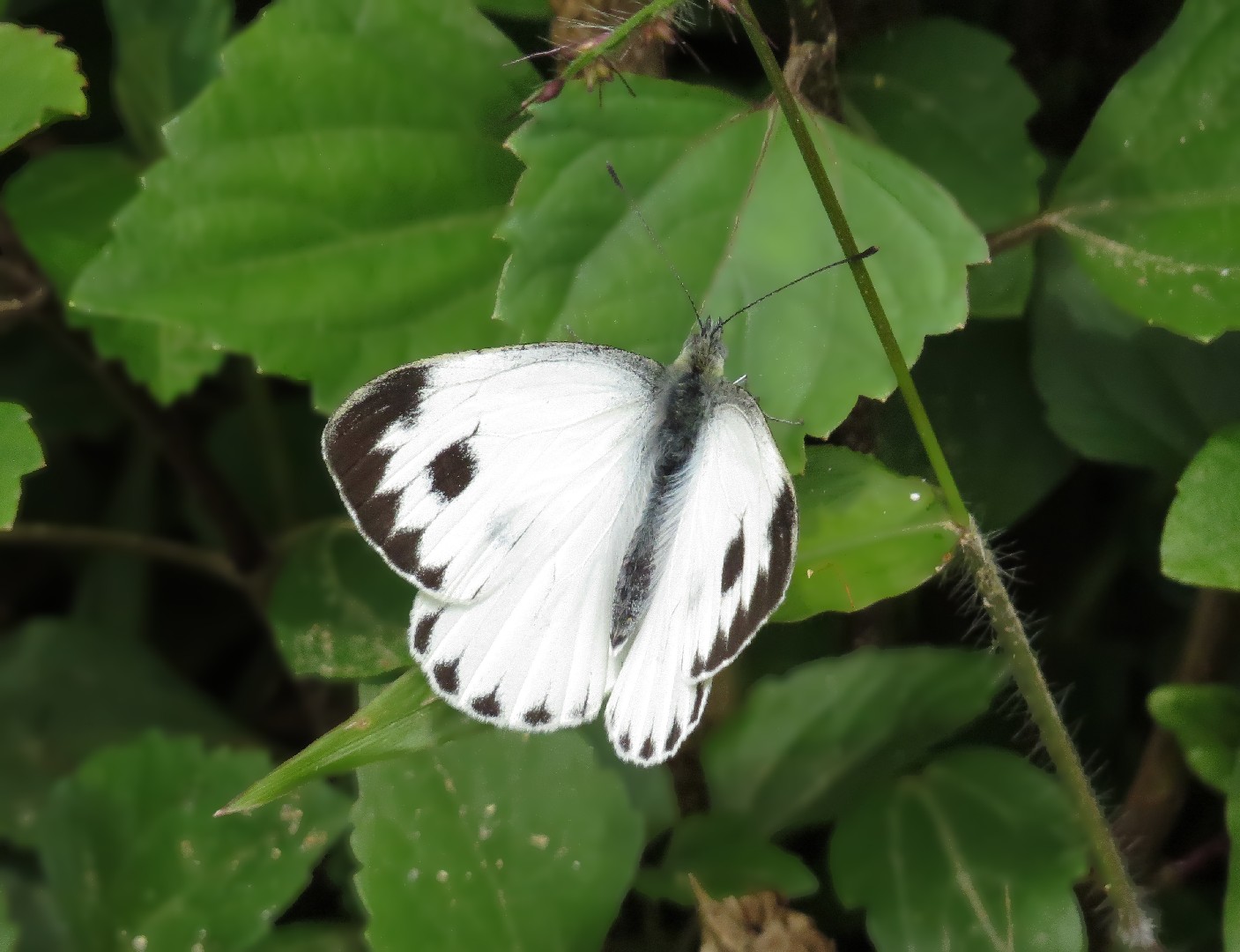
3. Indian cabbage white
The male is white to pale cream on its upperside. The base of the forewing, the basal portion of the costa, and the base and upper margin of the cell have a scattering of black scales. It is black from the apex to about the middle of the terminal margin. On the latter the black extends for a very short distance triangularly along the veins. There is a round black spot in interspace 3. The hindwing has a subcostal black spot as in Pieris rapae but is generally larger and more conspicuous, and a series of four or five terminal black spots that vary in size at the apices of the veins. Underside: the forewing is white; cell and costa are lightly irrorated (speckled) with black scales; apex is somewhat broadly tinged with ochraceous yellow. Interspaces 1, 3 and 5 have conspicuous subquadrate black spots; the spot in interspace 1 sometimes extends out of interspace 1. That in interspace 5 is ill-defined. Hindwing: from pale, almost white, to dark ochraceous, thickly irrorated all over (with the exception of a longitudinal streak in the cell, and in the darker specimens similar longitudinal streaks in the interspaces) with black scales; costa above vein 8 are chrome yellow. Antennae are black with minute white specks; the long hairs on the head and thorax are greenish grey; the abdomen is black. Beneath, the head, thorax and abdomen are white. The female is similar to the male on the underside, but the scattering of black scales is more prominent; the black on the apex and termen of the forewing and the black spots on the termen of the hindwing are broader and more extended inwards; on the forewing there is an additional spot in interspace 1, and both this and the spot in interspace 3 in many specimens are connected by a line of black scales along the veins to the outer black border; also the spot in interspace 1 often extends across vein 1 into the interspace below.It has a wingspan of 4 - 6 cm. 
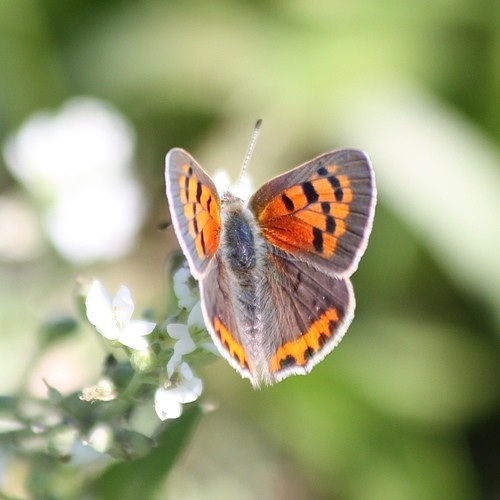
4. Small copper
The upperside forewings are a bright orange with a dark outside edge border and with eight or nine black spots. The hindwings are dark with an orange border. Some females also have a row of blue spots inside the orange border and are known as form caeruleopunctata. The undersides are patterned in a similar way but are paler. The black spots on the forewings are outlined in yellow and the dark colouring is replaced by a pale brownish grey. The hindwings are the same brown/grey colour with small black dots and a narrow orange border. The caterpillars (larvae) are usually green, but some have a purple stripe down the middle of the back and along each side. 
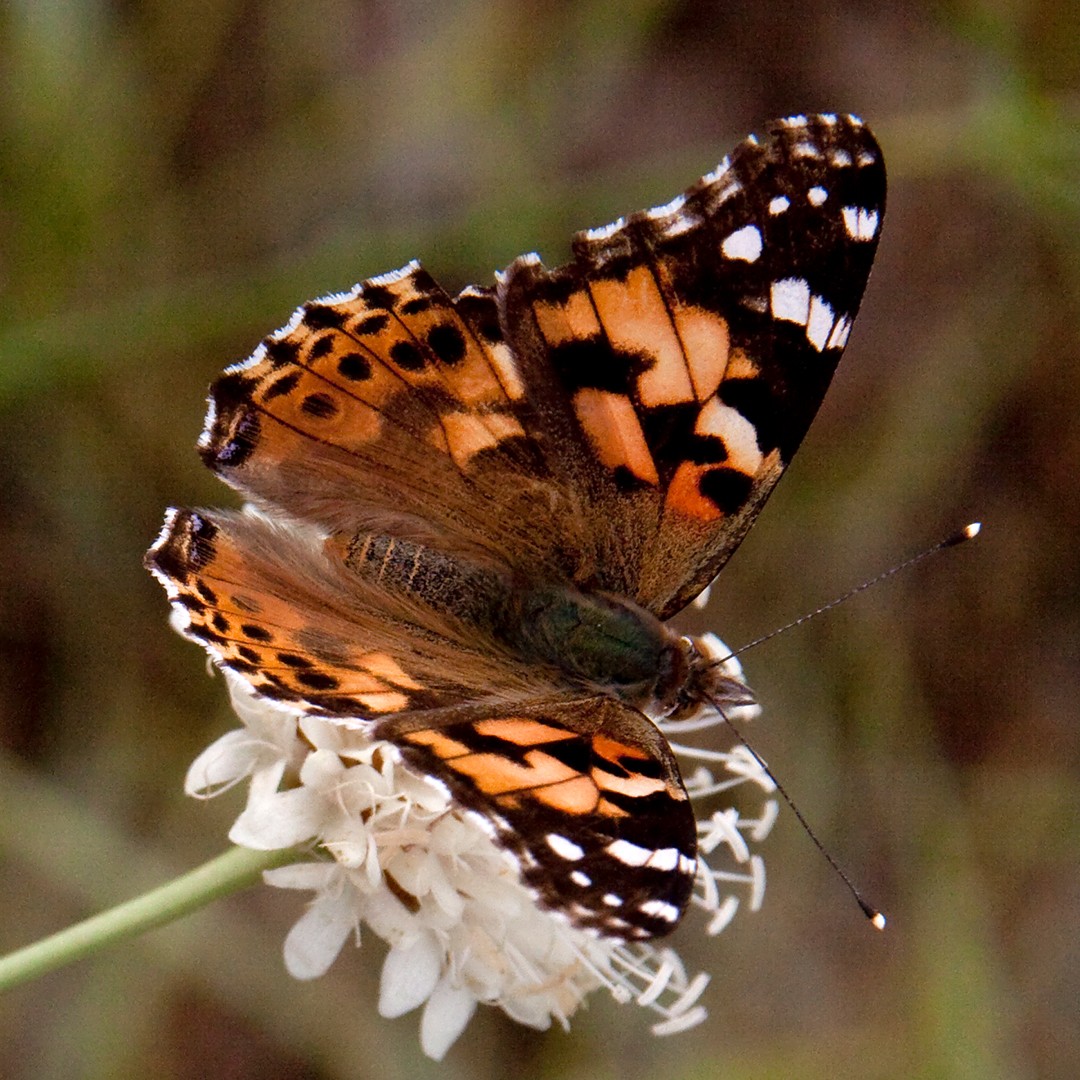
5. Painted lady
The painted lady is a migratory butterfly that spends part of the year in Northern Africa and then migrates to Europe during the warmer months. Although the adults feed on nectar from flowers, the larvae feed on the leaves of nettles and thistles.
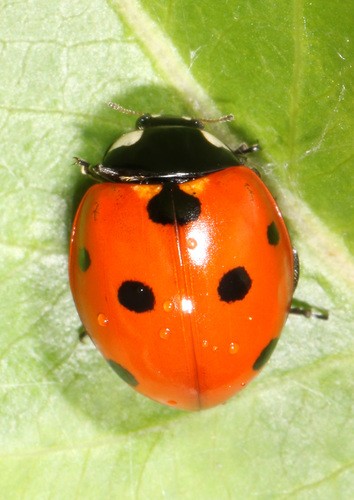
6. Seven-spotted ladybug
Seven-spotted ladybug (Coccinella septempunctata), known in North America as the "seven-spotted ladybug," is the most common species of ladybird in Europe and the official state insect of five U.S. states. While not native to North America, it has established itself there after being introduced to control aphid populations. Its bright coloring deters predators, and it may also play dead or secrete foul-smelling liquids to discourage consumption.
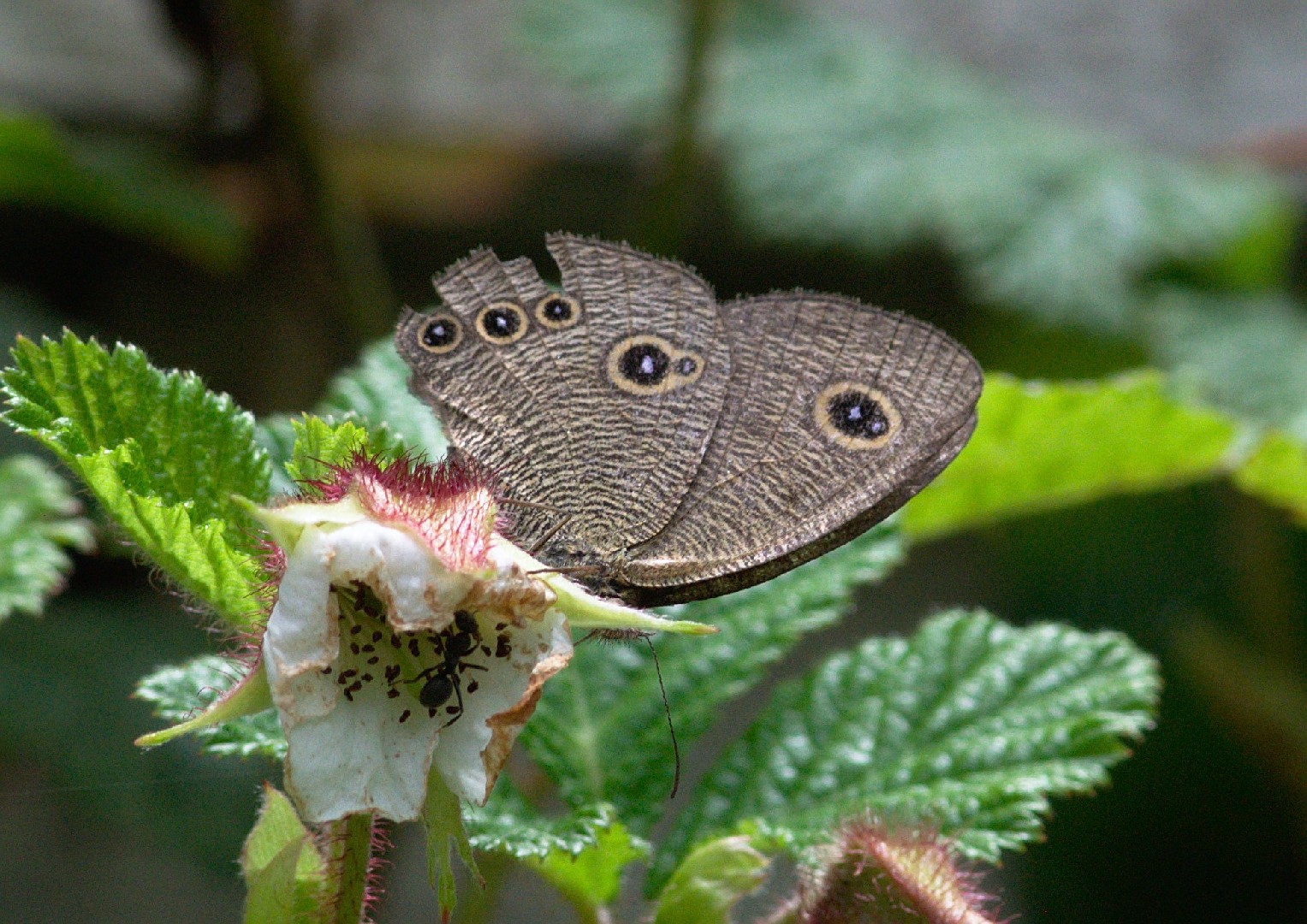
7. Kumaon five-ring
Ypthima nikaea, the Moore's fivering, is a species of Satyrinae butterfly found in Asia. 
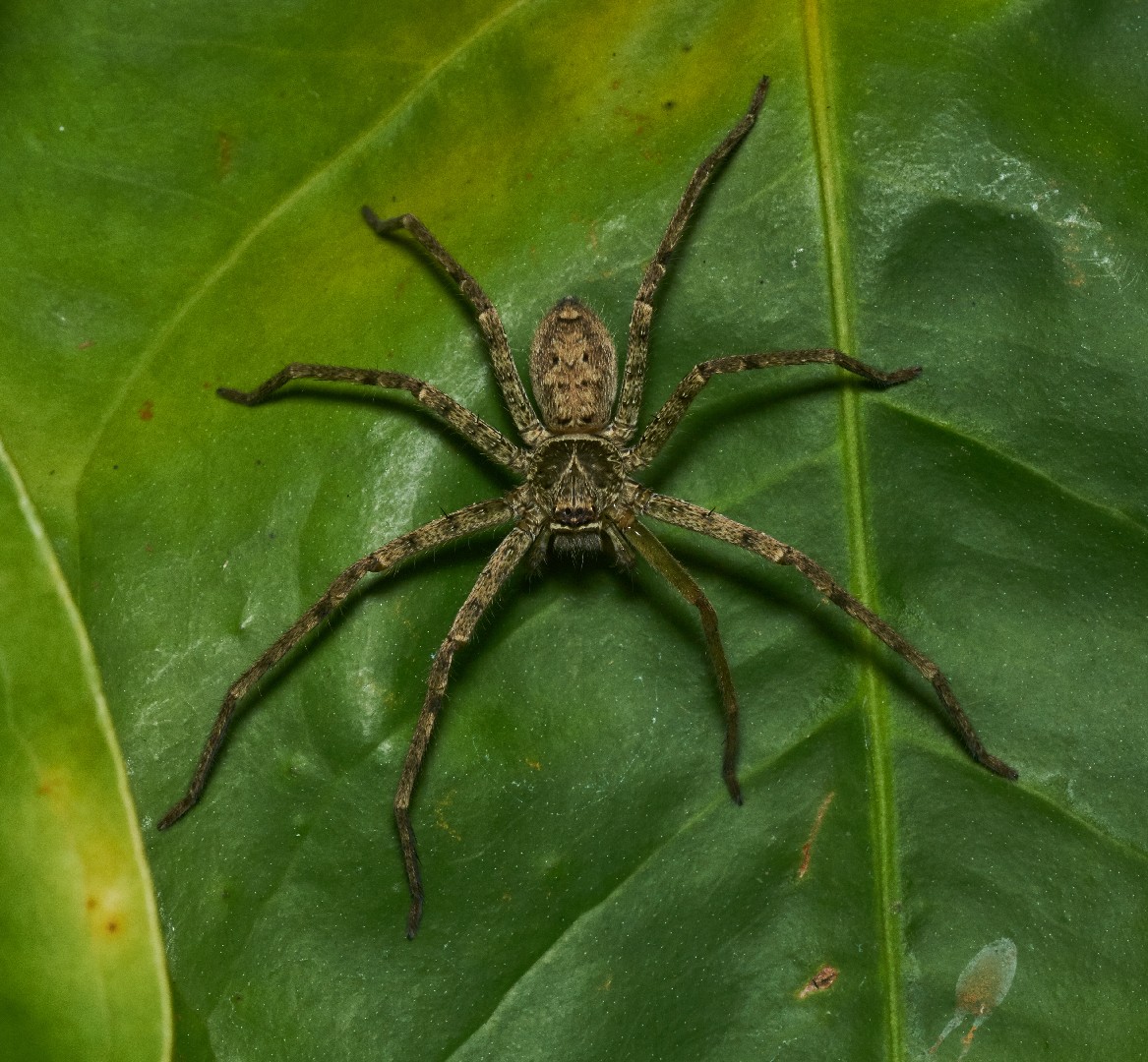
8. Giant Crab Spider
The giant Crab Spider is a large spider native to the tropics; the largest reported individual had a leg span of 30 cm. This cosmopolitan spider is highly valued in some areas, as it's able to catch cockroaches and other indoor pests. Reportedly, it hunts even scorpions and bats. This spider is venomous and sometimes bites humans, but it's considered harmless. 

9. Eastern bath white
Pontia edusa is a small to medium-sized migrant butterfly, with a wingspan reaching about 4.5 cm. The upperside of the wings is white, with black stains on the top of the forewing and hindwing. The hindwing undersides have greenish-grey spots. They are greyish-greenish, with black dots and broad yellow stripes, quite similar to the larva of the cabbage butterfly (Pieris brassicae). 
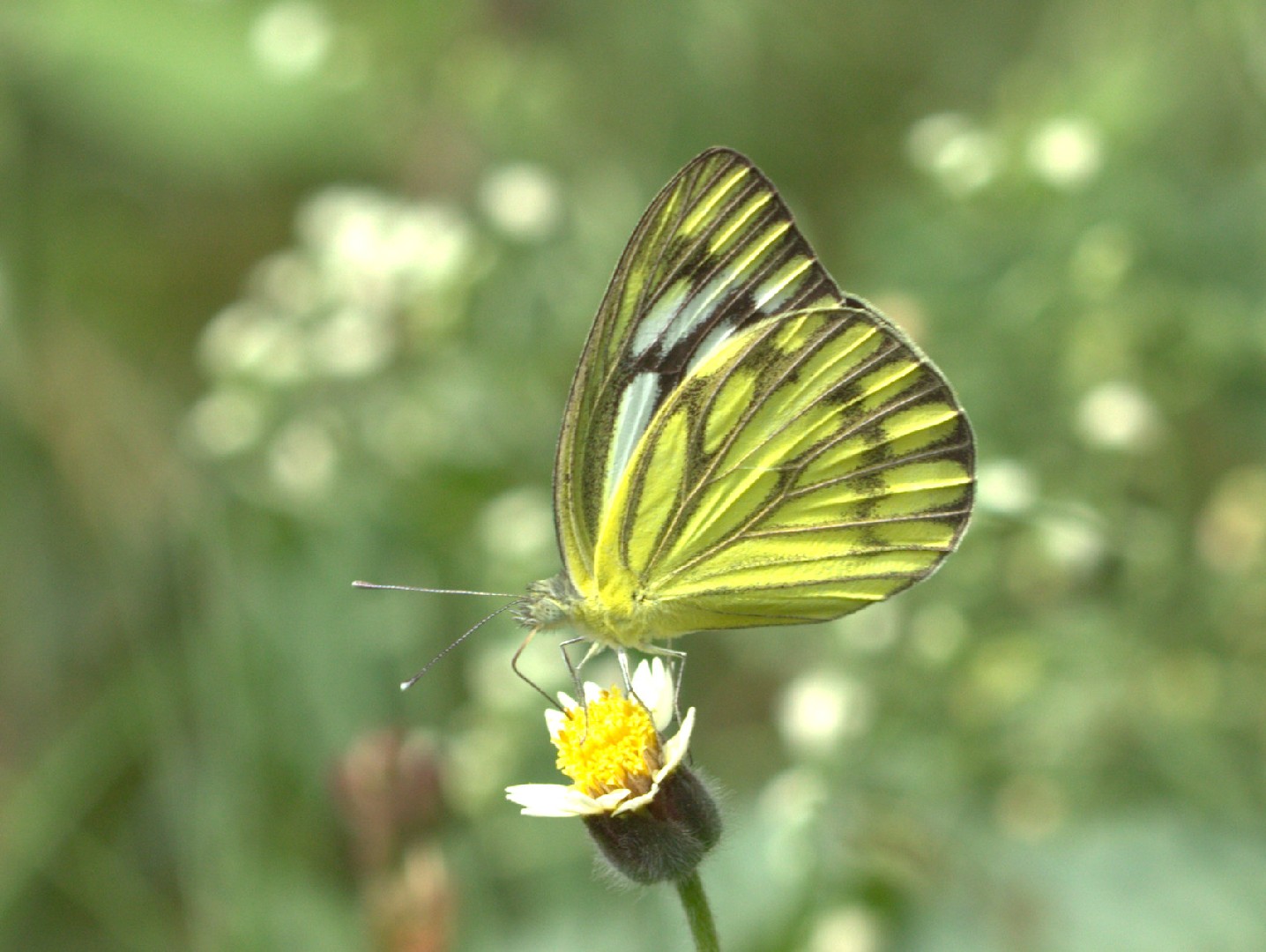
10. Common gull
Wet-season brood. Male upperside: white, a greyish-blue shade at base of the wings and along the veins, due to the dark markings on the underside that show through. Forewing: veins black; apex and termen black, the inner margin of that colour extended in an irregular curve from middle of costa to base of terminal third of vein 4, thence continued obliquely outwards to the tornal angle; interspaces 6 and 9 with short narrow greyish-white streaks of the ground colour that stretch into the black apical area but do not reach the margin; a short black subterminal bar between veins 3 and 4 and another, less clearly defined, between veins 1 and 2. Hindwing: veins 4 to 7 with outwardly dilated broad black edgings that coalesce sometimes and form an anterior, irregular, black, terminal margin to the wing. Underside, forewing: white, the veins broadly margined on both sides by dusky black; costal margin broadly and apex suffused with yellow; subterminal black bars between veins 1 and 2, and 3, and 4 as on the upperside but less clearly defined. Hindwing entirely suffused with yellow, the veins diffusely bordered with black; a more or less incomplete, subterminal series of dusky spots in interspaces 1 to 6; more often than not the spot in 5 entirely absent; a conspicuous chrome-yellow spot on the precostal area. Antennae black, obscurely speckled with white; head and thorax bluish grey; abdomen dusky black; beneath: the palpi and abdomen white, the thorax yellow. Female similar to the male but very much darker. Upperside: veins more broadly bordered with black; in many specimens only the following portions of the white ground colour are apparent. Forewing: a broad streak in cell and beyond it a discal series of streaks in interspaces 1 to 6, 9, and 10; the streaks in interspaces 1 and 3 very broadly interrupted by the transverse black bars; that in 6 more or less obsolescent. Hindwing: a broad streak in cell, a discal series of streaks in interspaces 2 to 7, and a posterior more or less obsolescent subterminal series of greyish-white double spots. Underside similar to that of the male only the veins much more broadly margined with diffuse black scaling. Antennae, head, thorax and abdomen as in the male. Dry-season brood. These differ from the wet-season brood as follows: male upperside, forewing: the apical and terminal black areas much restricted; veins concolorous; black subterminal bare less clearly defined; the lower one often obsolete. Hindwing: the black markings on the termen represented by short triangular irrorations (speckles) of black scales at the apices chiefly of the anterior veins. Underside: as in the wet-season, but the yellow much paler and somewhat ochraceous in tint. Female differs less from the wet-season female, but the black markings on both the upper and underside are narrower and less pronounced, and on the latter the yellow suffusion is paler and ochraceous in tint. 
More
